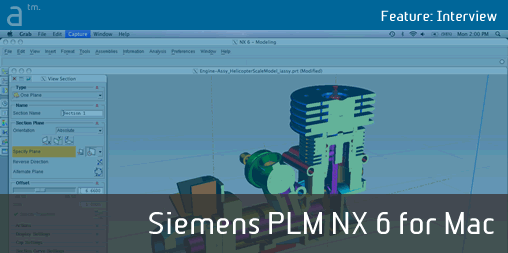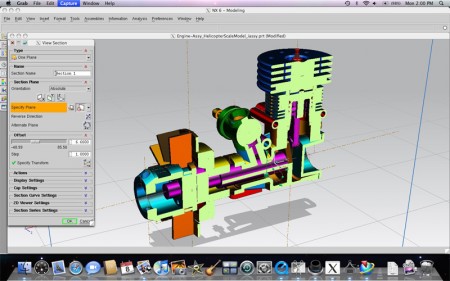Continued from page 1
Jim Phelan (JP): We had a total of 21 different companies that participated in the EAP (early adopter program) for the Mac OS X version of NX 6. Unfortunately, we are not able to share any of the names of these companies except for one of the smaller companies called Eggimann Design.
AFR: Okay, but of the other 20 companies, were these companies large and global companies?
JP: The vast majority of the companies in the EAP for NX 6 on the Mac were global companies and one of them was a Fortune 500 company.
AFR: That’s exciting to hear. The Mac has penetrated enterprise-class engineering customers. Let’s go back now and touch on what Synchronous Technology is, because I know that is one very strong and important piece of the technology advantage in NX.
Paul Brown (PB): Right, what is Synchronous Technology? This is a great question because a lot in the press that has been written about Synchronous Technology has misunderstood the story. So let’s start with what Synchronous Technology is not.
We believe history-based modeling is a key technology. Siemens is not turning its back on parametrics and history-based modeling because of Synchronous Technology.
Also, Synchronous Technology is not direct (explicit) modeling. It’s got aspect of direct modeling like dragging edges and stuff, but it also infers intelligence on the fly and can build intelligence later, unlike basic direct modeling tools.
AFR: Okay, so what is your view of the problem with old-fashioned history-based parametrics?
PB: History-based parametrics is great but it has some hang-ups because it relies on everything being in sequence and in order. You can’t add certain intelligence later. You are more hamstrung with going back to earlier decisions. With Synchronous Technology we add in the flexibility you really want to be there with your common parametric-based design tools.
AFR: So you can build-in parametric intelligence at any time along the way, not just at the beginning and not just in linear order?
PB: That’s correct. Also, you can bring in other models from other programs like ProE or another PLM tool…and Synchronous Technology can still recognize things like tangency, symmetry rules and make edits and do key rebuilds.
AFR: But where does the explicit direct modeling come into play?
JP: With Synchronous Technology and NX 6 you have the ability of doing history-based parametric modeling or free form direct modeling at any time…and you don’t have to choose one or the other, you can use both.
PB: That’s right, we have a long and innovative history with advanced direct modeling going back to Unigraphics 12 with our direct editing modeling tools.
AFR: Sounds wonderful.
PB: We like to think so (laughs…)
AFR: I have just one more question and it deals with SolidEdge. Will Siemens bring that product to the Mac as well?
JP: Anthony we cannot comment on which products we have that might come to the Mac in the future or not.
AFR: I figured–but I had to ask. If you did would it be as easy as NX?
PB: No. NX has a neutral user-interface structure and is made to run on many platforms. That is one of its key strengths! SolidEdge is not in my division but what I do know is that it uses a lot of Microsoft components in its code, so it would be a bigger task.
AFR: Paul and Jim, thanks for talking to me about NX 6 on the Mac. You guys have wonderful technology and it is great see it on Apple’s platform and even more wonderful to hear of your customers’ use and interest in it running on Apple’s workstations.
PB and JP: You are welcome. Thank you.
Some Final Notes
This was one of our more interesting interviews and what we have learned is that the PLM industry’s most advanced PLM (product lifecycle management) application–a combination of design, modeling, MCAD and engineering and collaboration–is running beautifully on Apple’s latest Mac OS X platform utilizing an X11 UNIX interface structure. See the screen shots above to check out what that looks like and there are YouTube videos with NX 6 on Mac in action here.
We hope this article clarifies Siemens’ Synchronous Technology as well. AEC industry readers here on Architosh may be very intrigued by the notions of a combination of direct modeling (something architects do all the time) and history-based parametric modeling (something used far more often in MCAD fields). We will be following this closely as time goes by.
To learn more about Siemens PLM NX for Mac go here.





Reader Comments
[…] See the article here: Architosh talks to Siemens about NX 6 for the Mac | Architosh […]
Comments are closed.